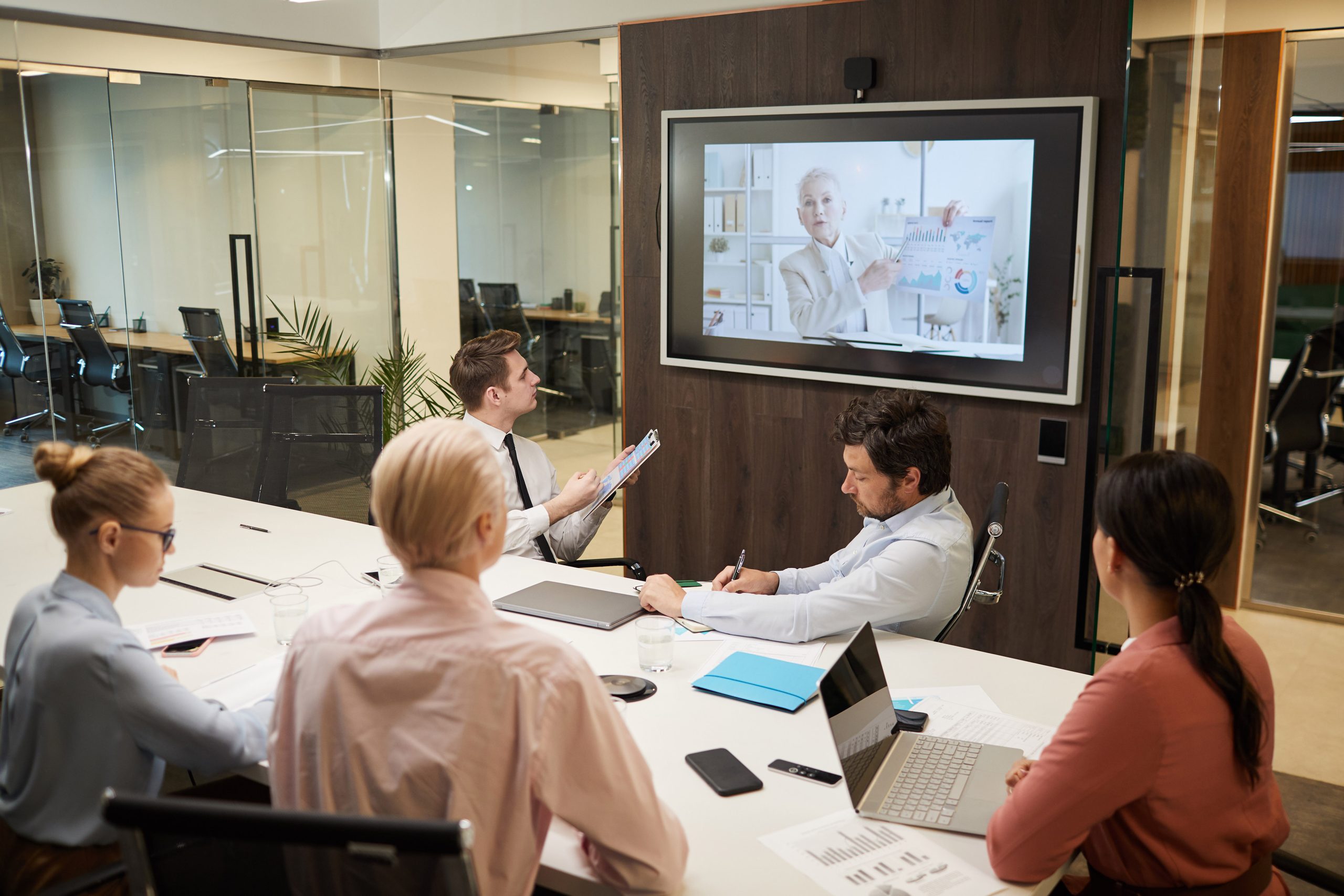Return To Office: 5 Ways Smart AV Tech Helps
It’s safe to say that most people aren’t in love with the return-to-office trend: almost half of the remote and hybrid workforce claim they’d rather quit than return to the office full-time.
The issue about many of those return-to-office (RTO) directives is that they’re mandatory. To ease the transition, companies are rethinking what an office experience should be. Perks like free coffee and open seating only go so far; what really draws employees to stay is an environment that makes work frictionless, more engaging and actually worth the commute.
With some strategic planning and implementation, AV technology can help employees “fall back in love” with working from the office again. Here are five ways to create environments that feel less like an obligation and more like a destination.
1. AI-Powered Systems
Whether built into larger systems or used individually, AI tools are changing how employees work. As they interact across devices, AI assistants don’t only exist in one place. Instead, they travel with employees, so leaders ought to consider ways of keeping their employees’ workflows consistent, no matter where they may be. A smooth experience is critical for workers today, especially as they begin to transition back to the office.
For businesses, it’s somewhat more complicated to ensure that AI functions as smoothly in a physical office as it does in dynamic remote setups. This is where AV technology expertise can be a game-changer. Tools like automated transcription, smart note-taking and real-time language translation can all be integrated into conference rooms, allowing employees to focus on meaningful discussions instead of administrative tasks.
2. Enhanced Conference Rooms
The traditional conference room setup — the long table, single screen, limited visibility — is dull, to say the least. Add in bad audio, glitchy video and ineffective room layouts, and it’s no wonder so many meetings feel disjointed. Today’s AV solutions need to tackle these issues to create flexible, tech-enabled spaces designed for meetings that employees actually look forward to engaging in.
Wireless presentation systems eliminate the hassle of cables and adapters, making it easy to share content instantly. Advanced audio processing, noise reduction, auto-framing cameras and facial tracking technology all create a more natural meeting experience.
Clearer sound, better visuals and smarter conference room setups are today’s magic formula for a more natural meeting experience.
3. Personalized and Customizable Workspaces
One of the biggest pains of returning to the office is that employees have grown accustomed to the personalized comfort of their home setups. The contrast of a standardized corporate space feels harsh, especially if they’re only in the office two or three days a week.
To begin with, hot-desking systems integrated with digital signage allow employees to book workspaces that match their preferences. Lighting, temperature and monitor settings adjust automatically based on individual profiles. AI-driven ambient controls fine-tune noise levels for focus or interaction.
In addition, these changes help bridge the access gap for those with hearing impairments. According to the National Institute of Health, approximately 15% of American adults (37.5 million) ages 18 and over report some trouble hearing.
These thoughtful enhancements make office workstations feel less generic and more like an extension of employees’ needs and preferred ways of working.
What if employees could truly customize their shared workspaces? The concept is simple: allow employees to digitally personalize their office experience, much like they would with a smartphone or personal laptop. Whether it’s custom lighting settings, preferred screen layouts, or a digital “workspace” that feels familiar, this level of personalization could take the in-office experience to the next level and empower employees to curate their own experience.
4. Creativity and Productivity
Most businesses look to AV technology as a way to boost productivity, but they can overlook its impact on creativity. The reality is that fostering productivity requires going beyond efficiency; it requires an environment that supports long-term creativity.
Here’s an ironic situation: instead of seeking guidance from their AV technologists, businesses frequently turn to consultants for guidance on driving productivity, only to be directed back to AV integrators for implementation. Why? Because well-designed AV solutions shape how people interact, brainstorm and problem-solve.
Smart collaboration tools, dynamic meeting spaces and immersive technology can encourage creative thinking just as much as they enhance efficiency in the short term. In the long term, businesses that prioritize this balance will see benefits in both efficiency and innovation.
5. Personal Connection
To wrap up, let’s take a break from talking about work and focus on one of the most important (yet often overlooked) elements of AV technology in the office — creating spaces that encourage connection.
The biggest mistake an organization can make in ordering employees back to the office is focusing solely on the logistics and updated technology. Those things matter, but they aren’t what make people want to come in. Once you have the right AV solutions in place, the real value of in-person work becomes clear. It’s about human connection.
Being back in the office provides a chance to build relationships in a way that simply isn’t possible in a remote setting. The micro-moments — bumping into a colleague and catching up, solving a problem in an impromptu brainstorm — are what make work feel meaningful. When companies prioritize both people and productivity, they create an environment where employees come to do more than mindlessly work; they come to engage, collaborate and form lasting relationships.
AV technology alone won’t make the return to office a perfect transition, but it can eliminate many of the pain points that make in-person work frustrating. Thoughtful design helps create spaces that people don’t just tolerate, but actually want to be in — and elements that make an office visually, acoustically and experientially inviting make a big difference.
Return To Office: 5 Ways Smart AV Tech Helps2025-02-142025-02-14http://lightwerks.com/wp-content/uploads/2022/05/lightwerks_logo-2022.pngLightWerks Audio Visual Solutionshttps://lightwerks.com/wp-content/uploads/2025/02/return-to-the-office-scaled.jpg200px200px



